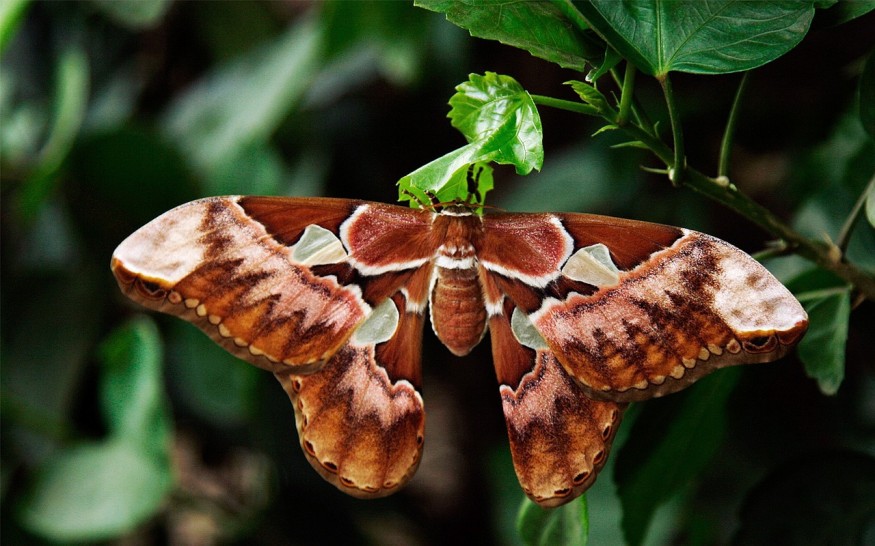Atlas moth (Attacus atlas) has been considered by scientists as the world's largest species. Native and endemic in the tropical and subtropical forests of Southeast Asia, the invasive insect species has an approximate wingspan measuring up to 24 centimeters or 9.4 inches. While the moths do not always show up, experts say they can be found throughout the year.
However, there have been instances in the past wherein Atlas moths had showed up in other parts of the globe. Last year, the giant moths were detected in the United States for the first time, prompting a potential risk of spread nationwide. The report came after a Washington state professor informed local authorities about the moth's whereabouts in the Bellevue area of Seattle city.
First Atlas Moth Sighting

The large moth seen in 2022 has been described the Washington State Department of Agriculture as having a wingspan comparable to the size of a human adult, a story also covered by Nature World News. It is the first sighting of its kind in the country and poses a potential risk of spreading across the country.
The incident occurred in early July after people observed the bizarre creature at a garage door in Bellevue. The photo of the moth was sent to the email of University of Washington professor, Patrick Tobin, who was reading email messages of backyard insects sent to him at that time, the Smithsonian Magazine reported.
Potential Spread
Just like other large animals or insects, foreign invasive species are sometimes introduced in a particular country by accident. Sometimes by sea through cargo vessels or illegal wildlife trafficking. In the case of the Atlas moth in Washington, it is still unclear how it got to Bellevue in the first place.
An invasive species is a living organism that can cause ecological damage in its new environment, where it is not native, according to the National Oceanic and Atmospheric Administration (NOAA), which highlighted that one of the most catastrophic repercussions of these organisms is causing the extinction of native animals and plants in a particular area, region, or even countrywide.
In the U.S., one of the most "notorious" of these invaders are the Burmese pythons, according to the United States Geological Survey (USGS).
In this context, it is not far from reality that Atlas moths can spread across the North American country. However, this could be mitigated as it is illegal to keep them in U.S. soil, according to the Washington State Department of Agriculture, as cited by local news outlet WTOP.
As a measure to prevent the spread of invasive species, U.S. federal authorities through the U.S. Forest Service advise the public to avoid non-native ornamental plants. This is a way to prevent the said species to increase their populations and harm the environment.
© 2025 NatureWorldNews.com All rights reserved. Do not reproduce without permission.

